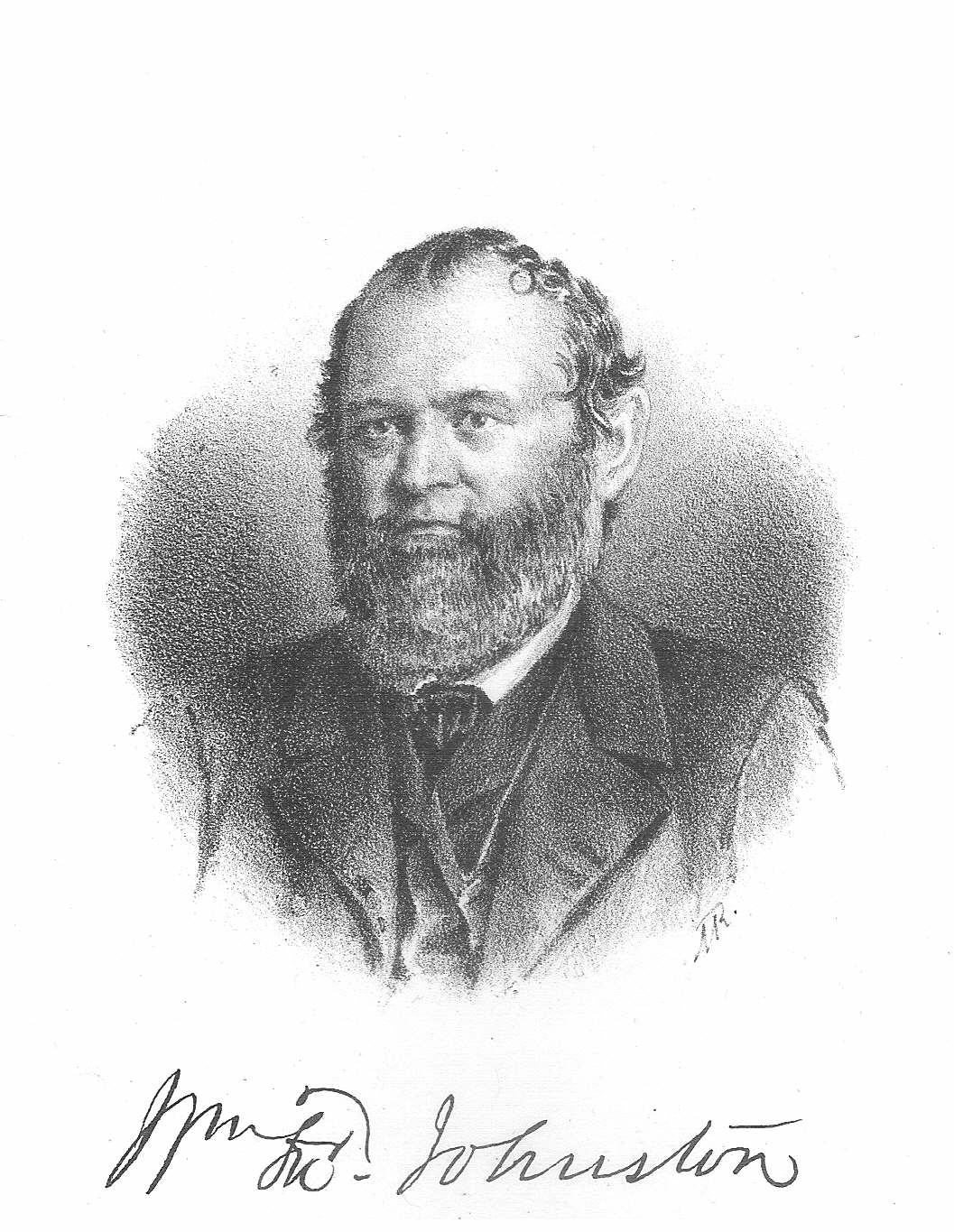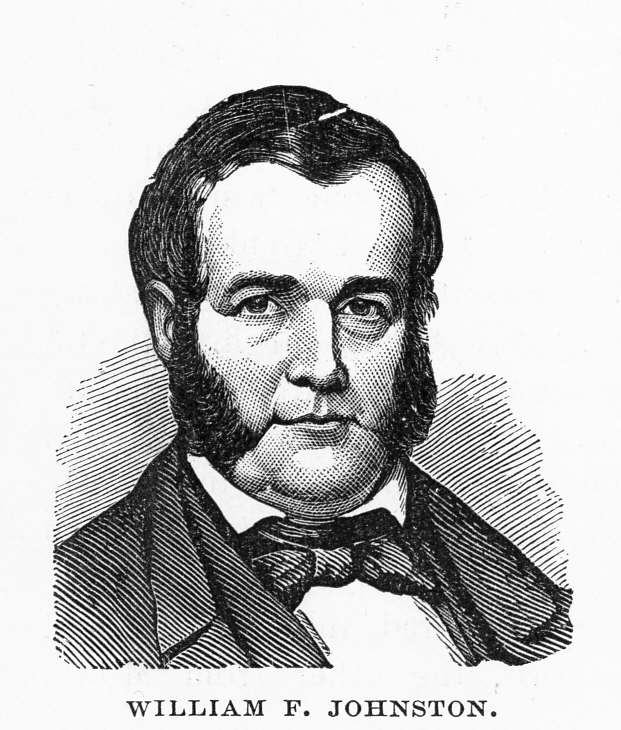Husband Gov. William Freame Johnston 1 2

AKA: William Freame Johnson 3
Born: 29 Nov 1808 - Greensburg, Westmoreland Co, PA 1 3
Christened:
Died: 25 Oct 1872 - Pittsburgh, Allegheny Co, PA 1 3
Buried:
Father: Alexander Johnston (1773-1872) 1 4 5
Mother: Elizabeth Freame (1781- ) 1 5
Marriage: 12 Apr 1832 1 3

• Additional Image: William F. Johnston.
• Biographical Sketch: William C. Armor, Lives of the Governors of Pennsylvania (Philadelphia, PA: James K. Simon, 1873).
To read this brief biographical sketch of his life and career, click here.
• Biographical Sketch: George Dallas Albert, History of the County of Westmoreland, Pennsylvania (Philadelphia, PA: L. H. Everts & Co., 1882).
To read this brief biographical sketch of his life and career, click here.
Wife Mary Monteith 1 3
Born:
Christened:
Died:
Buried:
Children
1 F Ann Johnston 2
Born:
Christened:
Died:
Buried:
Spouse: Dr. John Gilpin ( -1868) 6
General Notes: Husband - Gov. William Freame Johnston
He had a limited common school and academic education, but acquired a great fund of general information by reading and observation. He studied law under Major J. B. Alexander, and was admitted to the bar in May, 1829, when in his twenty-first year. Shortly afterward he removed to Armstrong County, Pennsylvania, and there he engaged in practice, and soon rose to a commanding position. He was appointed by Attorney-Gen. Samuel Douglas, and subsequently by Attorney-Gen. Lewis, district attorney for Armstrong County, which office he held until the expiration of Gov. Wolf's first term. For several years he represented the county in the lower house of the legislature, and in 1847 was elected a member of the senate from the district composed of the counties of Armstrong, Indiana, Cambria and Clearfield. "As a legislator, Mr. Johnston," says a biographer, "was bold and original, not beholden to precedents, and was an acknowledged leader." During the period in which he was in the legislature a great financial crisis occurred, and the distress which ensued was extreme. At this crisis Mr. Johnston came forward with a proposition to issue relief notes, for the payment or funding of which the state pledged its faith. This he advocated with his usual energy and logical acuteness, and though a majority of the legislature was politically opposed to him, it was adopted, and gave instant relief." In 1847 Mr. Johnston was elected president of the senate. By a provision of the constitution-if any vacancy occur by death or otherwise, in the office of governor, the speaker of the senate become the acting executive officer-Gov. Shunk resigning on the 9th of July because of ill health, Speaker Johnston became governor. In 1848 he was the Whig nominee for the office, and was elected over Morris Longstreth, after a very sharp and remarkably close contest. Gov. Johnston managed the financial affairs of the commonwealth during his administration in a very creditable manner. One of the subjects which first and most fully occupied his attention was the material interests of the commonwealth, and he argued with great ability in his first message for a protective tariff. One work of lasting and high value which he accomplished was the publication of twenty-eight large volumes, known as the Colonial Records and Pennsylvania Archives, composed of important papers relating to the most interesting period of state history. Upon retiring from office, after failing to secure a re-election, Mr. Johnston returned to Kittanning, engaged in the practice of his profession, and also entered upon an active business life, at different periods being interested in the manufacture of iron, boring for salt, the production of oil from bituminous shales, and the refining of petroleum. He was prominent in organizing the Allegheny Valley Railroad Company, and was its first president. Under his management the road was built from Pittsburgh to Kittanning. During the war of the rebellion he took an active part in organizing troops, and superintended the construction of the defenses at Pittsburgh. He was appointed by President Andrew Johnson collector of the port of Philadelphia, the duties of which office he discharged, for several months, but through the hostility of a majority of the senate to the President, he was rejected by that body, though ample testimony was given that the office was faithfully and impartially administered. He then practiced law in Philadelphia, associating with himself Hon. George S. Selden, of Meadville, and subsequently-some time in 1868-returned to Kittanning. In 1871 he removed to Pittsburgh, and he died there at the residence of Mrs. Samuel Bailey. At the commemorative meeting of the Armstrong bar Judge Logan made a brief address, a single paragraph idea of the Governor's character. "I gladly testify," said he, "to the fine ability of Gov. Johnston as a lawyer, and his powers as an advocate; to his marked courtesy of address, and his uniformly gentlemanly bearing; to his absolute integrity in professional relation, always the characteristic of the great lawyer and man; and to his scorn of the wrong. To say that Gov. Johnston was distinguished in these things is but the tribute of truth to the recollection of a man whose presence commanded affection, and whose memory compels respect." [HAC 1883, 354x]
He and his wife were the parents of five sons and two daughters.